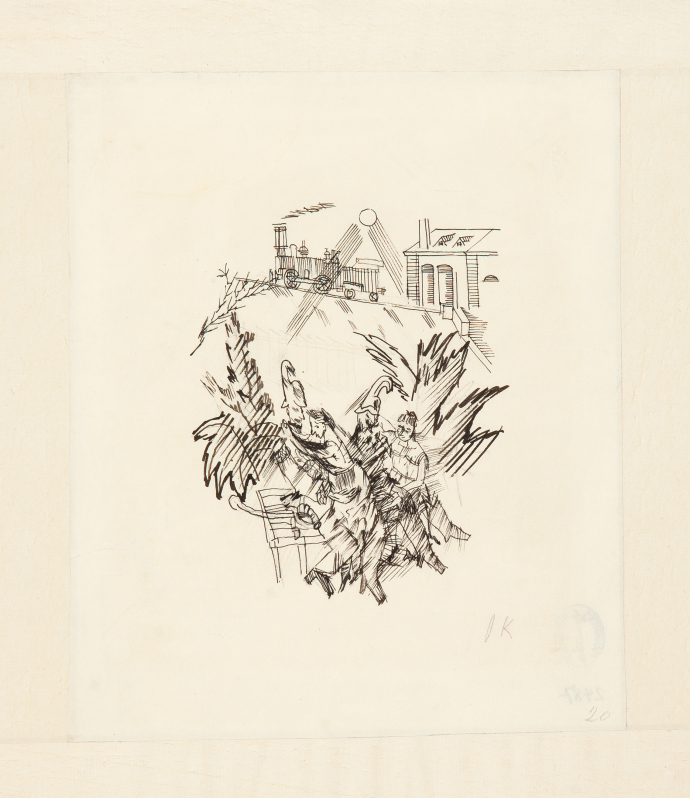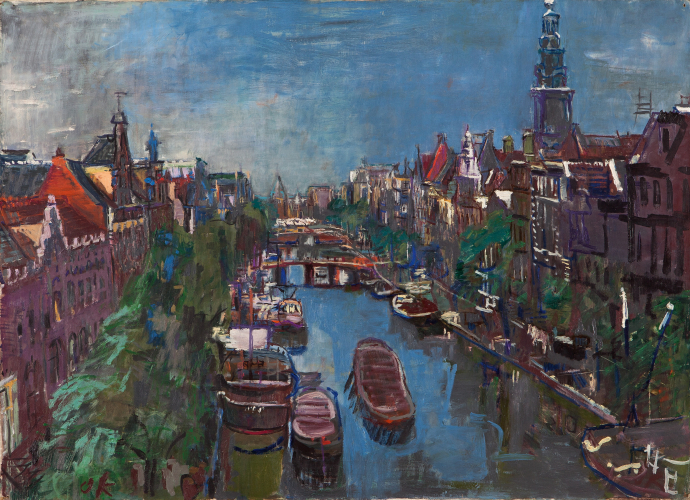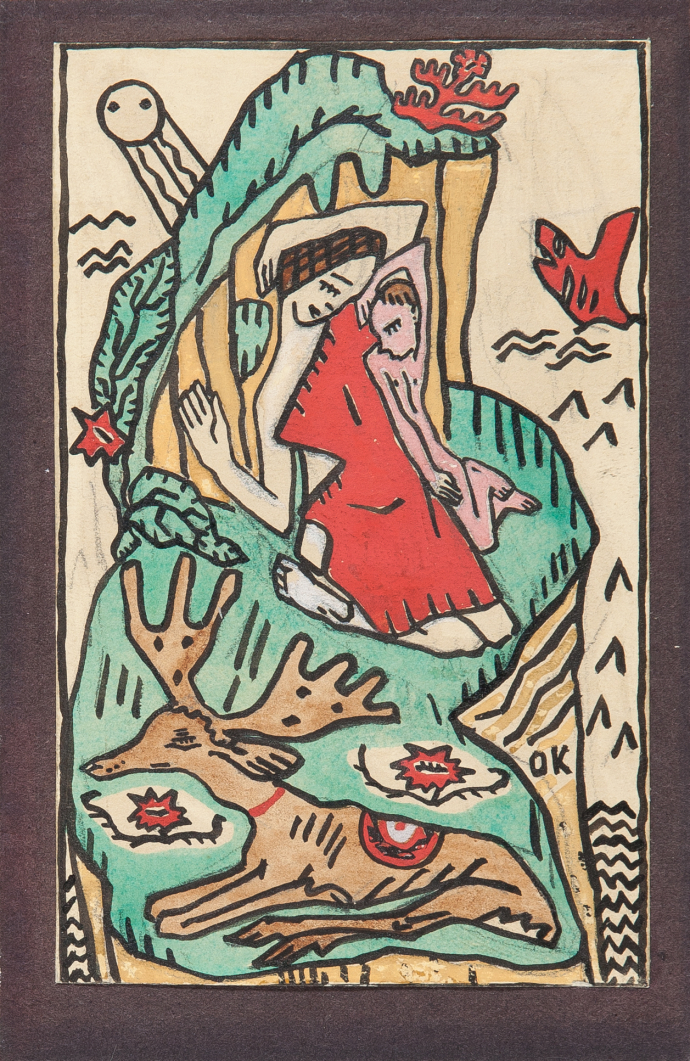
Intro
Oskar Kokoschka’s portrait of the Swiss psychiatrist and ant researcher Auguste Forel (1848–1931) is one of the highlights of his early creative period. Kokoschka—24 years old at the time and celebrated in Vienna as an exceptional young talent—painted it in 1910 at Lake Geneva. In contrast to the idealization of the human figure found in Viennese Jugendstil, he celebrates a disembodied spiritualization. The picture’s spatial situation remains vague and the paint has been applied so thinly that the coarse structure of the canvas is visible almost everywhere.
Completely concentrated on his model’s face and hands, Kokoschka emphasizes Forel’s individual character in these sections, while the hatching repeatedly scratched into the picture with the brush handle lends it a graphic dimension. However, it is Forel’s eyes that form the center of the portrait. With their concentrated gaze directed inward, they evoke—like his hands and face—the spiritual world of an individual who appears to be simultaneously absent and present.
Background
The young Oskar Kokoschka became famous virtually overnight in Vienna during the 1910s for his ability to portray people as if with X-ray eyes. Just as radiology, which had been invented a short while before, suddenly made the bones and organs of living people visible, so the Expressionist painter aimed to record the being and the soul of the people he portrayed.
In stark contrast to the idealisation of the human figure, which was customary in Art Nouveau at virtually the same time, Kokoschka’s early portraits emphasise more than anything else the imperfections and weaknesses of the people he painted. The Austrian artist focused not on the superficial beauty of his models, but rather on their attitude, character and incipient changes.
Among Kokoschka’s early portraits, one of the most impressive examples of this way of seeing, directed towards the soul of the person he painted, can be seen in the Mannheim painting »Auguste Forel«. This work in particular shows how merciless and novel the Austrian artist’s portraits were at the time. The portrait fails to provide additional information about either the social standing or the external appearance of the famous Swiss psychiatrist and myrmecologist Auguste Forel (1848–1931).
The artist was only interested in the scientist’s face and hands, which he developed as a mirror of his subject’s personality. Forel was 62 years old at the time, and the frozen, withdrawn gaze and the convulsive pose of the hands can also be interpreted as heralds of the stroke, which Forel suffered two years later. In this case, however, the gift of anticipating future changes to the subject in his pictures had negative consequences for Kokoschka: The professor refused to purchase the portrait, ironically commenting that it made him look as though he had suffered a stroke.
Kunsthalle Mannheim / Cem Yücetas
)
![Hockende Frau Signatur: monogr. mi.re.: "OK": Beschriftung verso: in Bleistift u.: "neues [unleserlich] 371/2 - 54 cm. [unleserlich]"](/sites/default/files/styles/700_breit/public/digitalisate/G2486_MOS_2018.jpg?itok=gp3nEIZc)



